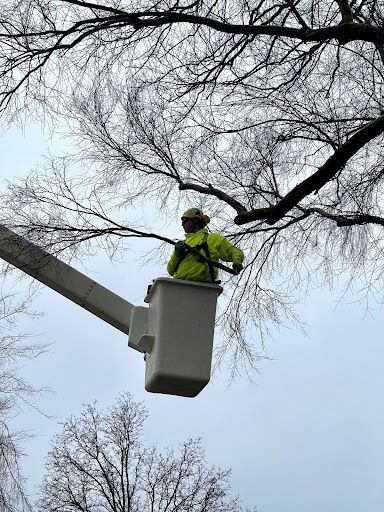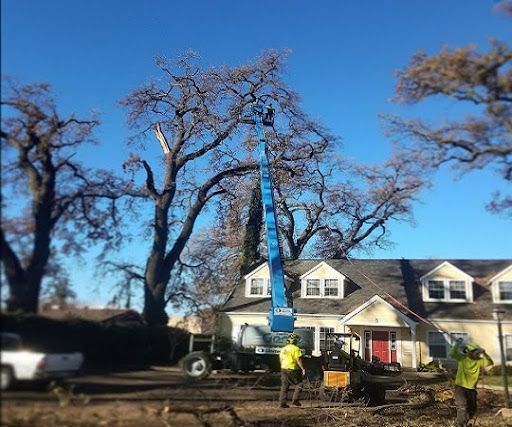Tree Trimming & Pruning for Fire Prevention and Defensible Space
In regions prone to wildfires, establishing defensible space around homes and communities is paramount for safety. One crucial aspect of creating defensible space involves strategic tree trimming and pruning. These practices not only enhance the aesthetic appeal of the landscape but also play a vital role in reducing fire hazards. In this blog, we'll delve into the significance of tree trimming and pruning services for fire prevention and the creation of defensible space.
Understanding Defensible Space
Defensible space refers to the buffer zone around a property that is intentionally maintained and designed to slow the spread of wildfires. It serves as a protective barrier, allowing firefighters to defend homes more effectively and providing residents with a safer environment during fire outbreaks. Creating defensible space involves various measures, and tree trimming and pruning are crucial components of this strategy.
Tree Trimming for Fire Prevention
Tree trimming is the process of selectively removing branches from a tree to maintain its health, shape, and safety. When it comes to fire prevention, trimming trees is essential for several reasons. Firstly, it helps eliminate dead or overhanging branches that can act as fuel for wildfires. These dry branches are highly flammable and can easily catch fire, leading to the rapid spread of flames.
Additionally, tree trimming creates a natural firebreak by reducing the continuity of vegetation. By spacing out trees and removing low-hanging branches, the potential for fire to climb into the crowns of trees is minimized. This can significantly impede the progression of wildfires and aid in the creation of defensible space.
Tree Pruning: A Precision Approach
Tree pruning involves the selective removal of specific parts of a tree, such as branches, buds, or roots, to improve its structure and health. In the context of fire prevention and defensible space, pruning serves a dual purpose. Firstly, it helps to maintain a safe distance between trees and structures, preventing the spread of fire through direct contact.
Secondly, proper pruning techniques can reduce the density of a tree's crown, minimizing the risk of crown fires. Crown fires occur when flames reach the topmost branches of trees, allowing the fire to rapidly spread from treetop to treetop. Pruning helps break the vertical continuity of vegetation, making it harder for fires to escalate.
Professional Tree Trimming and Pruning Services

While the importance of tree trimming and pruning for fire prevention is clear, it's crucial to enlist the services of professionals for these tasks. Professional tree trimming and pruning services ensure that the work is carried out safely and effectively. Certified arborists possess the knowledge and skills to identify potential hazards, assess tree health, and execute precise trimming and pruning techniques.
Homeowners and communities looking to establish defensible space should schedule regular tree maintenance services to keep their properties resilient against wildfires. These services not only protect lives and property but also contribute to the overall health and longevity of the trees.
Defensible Space: A Repeated Emphasis
Creating a defensible space is an ongoing commitment that requires regular attention and maintenance. Through strategic tree trimming and pruning, homeowners and communities can significantly enhance their defensible space against wildfires. Regularly assessing and managing vegetation, especially around homes, is a key component of wildfire preparedness.
Defensible space, when integrated into landscaping practices, provides a critical line of defense against the destructive force of wildfires. By incorporating tree trimming and
pruning services
into your fire prevention strategy, you contribute to the safety and resilience of your property and surrounding areas.
Contact About Trees for Expert Tree Trimming and Pruning Services
For comprehensive tree trimming and pruning services that prioritize both fire prevention and the health of your landscape,
contact About Trees. Our certified arborists specialize in creating and maintaining defensible space around your property, ensuring that your trees not only enhance the beauty of your surroundings but also contribute to a safer environment. Don't wait until the next wildfire season – take proactive steps today to safeguard your home and community.



